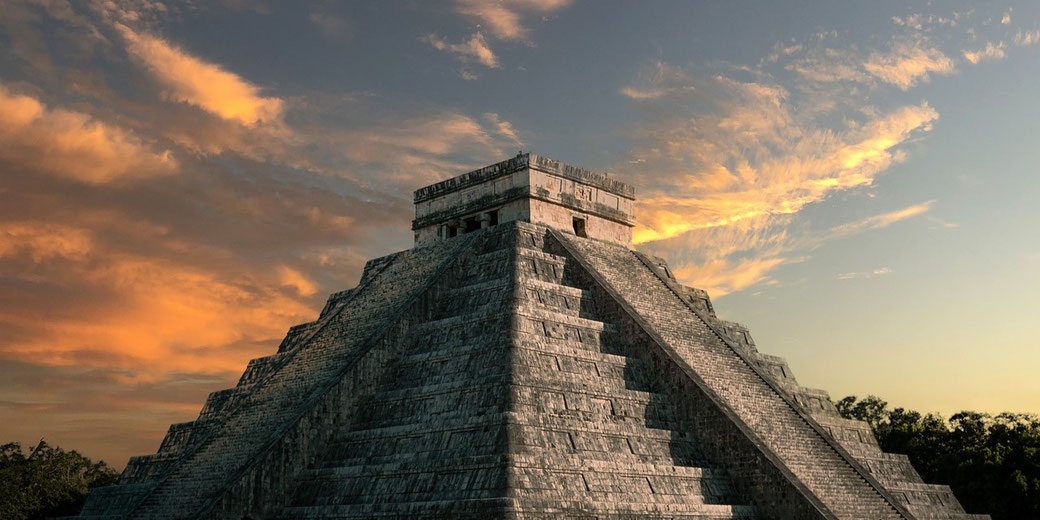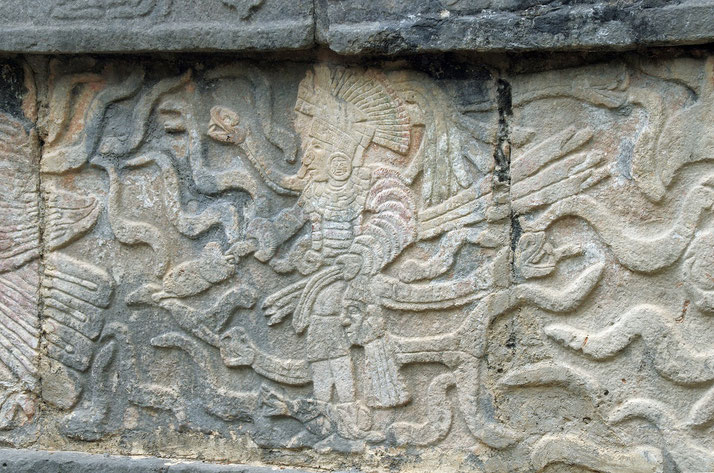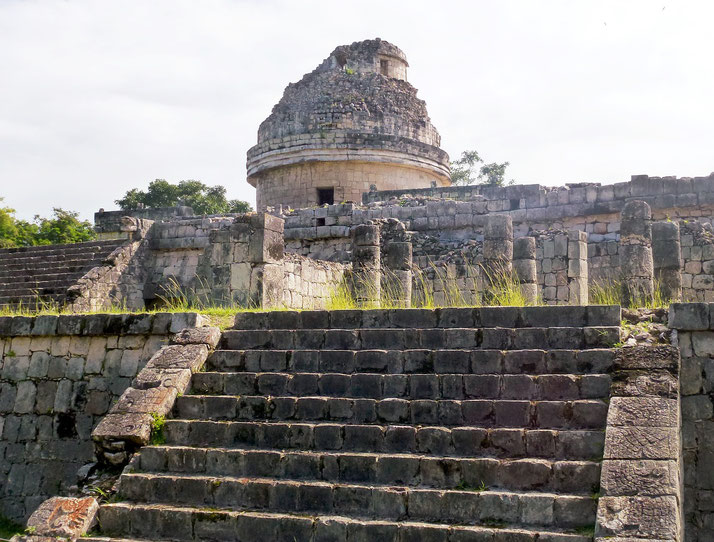Unlocking the secrets of the mysterious ruins of Chichen Itza

For centuries, the ruins of Chichen Itza have captivated and puzzled explorers, archaeologists, and historians.
This ancient Mayan city, located in the Yucatan Peninsula of Mexico, boasts impressive structures such as the Pyramid of Kukulcan, the Temple of the Warriors, and the Caracol.
Yet, despite decades of research, much about Chichen Itza remains shrouded in mystery.
From its sudden abandonment to the enigmatic ball court and the eerie sounds that emanate from the ruins, the secrets of Chichen Itza continue to intrigue and fascinate scholars and travelers alike.
The history of Chichen Itza
Chichen Itza, one of the most famous ancient Mayan cities, has puzzled archaeologists and historians for centuries.
The city, located on the Yucatan Peninsula in Mexico, was one of the most powerful Mayan centers from the 7th to 13th centuries.
Chichen Itza's mystery stems from its unique architecture, complex astronomical observations, and its sudden abandonment.
Pyramid of Kukulcan
The Pyramid of Kukulcan, also known as El Castillo, is one of the most famous and iconic structures at Chichen Itza.
It is a step pyramid with four sides, each of which has a stairway with 91 steps. Including the top platform, there are a total of 365 steps, which is thought to represent the number of days in the Mayan calendar.
The pyramid was built in several phases, with the earliest construction dating back to the 9th century AD.
However, the structure as it appears today was likely completed in the 12th century, during the Mayan Late Classic period.
The Pyramid of Kukulcan was built as a temple to the Mayan god of wind and storms, Kukulcan, also known as Quetzalcoatl in other Mesoamerican cultures.
The pyramid is oriented to the cardinal directions and is aligned with astronomical phenomena such as the equinoxes, which suggest that it may have served as an astronomical observatory as well as a temple.
One of the most striking features of the Pyramid of Kukulcan is the play of light and shadow that occurs during the equinoxes.
On these days, the sunlight creates the appearance of a serpent slithering down the side of the pyramid.
The illusion is created by the angles of the pyramid's corners and the way in which the sun's light interacts with them.
Temple of the Warriors
The Temple of the Warriors is a large complex located at the northern end of Chichen Itza's central plaza.
It was built during the late Mayan period and served as a religious and political center for the city.
The complex features a large stepped pyramid, a large ball court, and a courtyard surrounded by numerous columns decorated with carved warrior figures.
The pyramid at the center of the Temple of the Warriors has a series of platforms and stairways leading to the top, where there is a temple structure.
The pyramid is adorned with images of warriors, including scenes of them wearing headdresses and carrying weapons.
One of the most interesting features of the Temple of the Warriors is an area known as "the 1000 Columns."
These columns are adorned with intricate carvings of warriors, serpents, and other figures.
The Temple of the Warriors also has a large ball court, which is similar to those found in other Mayan cities.
The ball court was used for a game known as "pok-ta-pok," which involved two teams trying to hit a rubber ball through a hoop using only their hips.
The game had significant religious and political significance in Mayan culture and was often used to resolve disputes between rival cities.

The Observatory
Perhaps the most mysterious structure in the ancient city is the Caracol, otherwise known as 'the observatory', which is located in the southwestern corner of Chichen Itza.
The structure is a circular building with a central staircase leading to an upper-level platform.
The walls of the building are pierced with narrow slits, which align with astronomical phenomena such as the movements of Venus and the equinoxes.
The name "Caracol" means "snail" in Spanish, which is likely a reference to the spiral staircase inside the building.
The spiral staircase leads up to the observation platform, which has a domed roof with an opening in the center.
This opening allowed observers to track celestial bodies as they moved across the night sky.
The Caracol is a remarkable example of the advanced astronomical knowledge of the ancient Mayans.
The alignment of the slits with the movements of celestial bodies demonstrates their understanding of the cosmos and their ability to make precise astronomical observations.
The building's design also shows the Mayans' appreciation for geometry and their ability to create complex structures that incorporated both form and function.
Despite its impressive design and astronomical significance, the exact purpose of the Caracol remains unclear.
Some researchers believe that it was used as an astronomical observatory, while others speculate that it may have served as a place for the ruling elite to conduct rituals and ceremonies.

Why was it abandoned?
The abandonment of Chichen Itza, like many other Mayan cities, remains a mystery. There is no clear consensus among researchers about why the city was abandoned, and several theories have been proposed over the years.
One theory is that environmental factors, such as drought or deforestation, may have contributed to the decline of Chichen Itza.
The Mayans relied heavily on agriculture, and if the region experienced prolonged periods of drought, it could have led to food shortages and population decline.
Alternatively, the city may have been conquered by invading forces. There is some evidence to suggest that Chichen Itza may have been invaded by the Toltecs, a group from central Mexico, who may have taken control of the city and imposed their own cultural practices.
However, this theory is still debated among researchers.
A third theory is that internal political and social unrest led to the abandonment of Chichen Itza. Mayan society was complex, with a hierarchical social structure and powerful rulers.
It is possible that conflicts between different factions or rulers within the city led to its eventual decline.
Despite the lack of a clear answer, researchers continue to study Chichen Itza and other Mayan cities to learn more about the factors that contributed to their rise and fall.
Legacy and importance
Chichen Itza's mystery has captured the imagination of people around the world, and the city has become a popular destination for tourists and researchers alike.
In 1988, the city was declared a UNESCO World Heritage site, and efforts continue to preserve and understand this ancient Mayan city.
Even though we still don't have many answers, Chichen Itza remains a fascinating enigma of Mayan civilization.
Its unique architecture, astronomical observations, and sudden abandonment continue to puzzle experts to this day.
Nevertheless, the city's mystery has only added to its allure, cementing its place as one of the most important archaeological sites in the world.
What do you need help with?
Download ready-to-use digital learning resources
Copyright © History Skills 2014-2024.
Contact via email
With the exception of links to external sites, some historical sources and extracts from specific publications, all content on this website is copyrighted by History Skills. This content may not be copied, republished or redistributed without written permission from the website creator. Please use the Contact page to obtain relevant permission.





